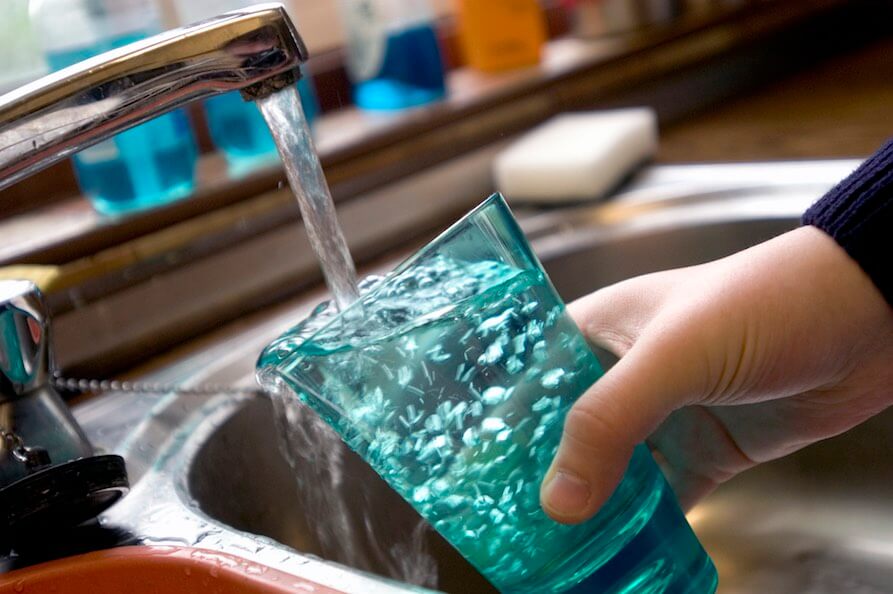Roughly two years ago, watersheds in the suburbs of Philadelphia were revealed to have been contaminated with potentially dangerous plastic compounds known as PFAS. Water taps in places like Horsham, Warminster and Warrington townships tested positive for perfluoroalkyl and polyfluoroalkyl substances (PFAS). While the full damage on human and animal health of ingesting PFAS is not completely understood, many residents in these regions and others across the country have anecdotally shared that they and their pets experience far higher rates of dangerous cancers than are considered normal.
On Nov. 30, the Pennsylvania Department of Environmental Protection continued to investigate the issue — but took no official new action — during a lengthy hearing in Harrisburg on the PFAS issue.
“The meeting Friday confirmed what I’ve been saying for more than two years — we should not permit ANY level of these chemicals in our drinking water,” said Pennsylvania state Rep Todd Stephens (R-152nd), one of the leaders who chaired the hearing of the PFAS Action Team, organized by Gov. Tom Wolf.
“While the federal government should take immediate action, since they’re derelict in their duties to protect the citizens of our commonwealth, it’s incumbent upon state government to step in and take the actions necessary to protect Pennsylvania families,” Stephen said, “including setting a non-detect standard for drinking water and providing blood tests, biomonitoring and a health study for all citizens exposed to the chemicals.”
PFAS have been turning up in watersheds nationwide for years. Experts from Minnesota, Michigan, North Carolina, New Hampshire and New Jersey testified at the about their experience fighting PFAS in the watershed – which in others states have been tied to the presence of manufacturers like Saint-Gobain, Chemours, 3M and DuPont.
In the Philly area, contaminations are believed linked to the former Naval Air Warfare Center in Warminster Township, and the Willow Grove Naval Air Station Joint Reserve Base in Horsham Township.
In 2014-15, water tests in Warrington Township found PFAS levels in the water of 1,600 parts per trillion (PPT). In 2016, the U.S. Environmental Protection Agency released new standards saying PFAS should amount to no more than 70 PPT in drinking water — the concentration at which adverse health effects are not expected to occur over a lifetime.
But some testifying at the Nov. 30 hearing said the threshold should be far lower. New Jersey earlier this year set a threshold of 13 to 14 PPT for different PFAS and related chemicals.
“Right now PFAS are at 50 parts per trillion in the drinking water in Upper Dublin Township. That’s not acceptable in New Jersey, but it’s just fine in Pennsylvania,” said environmental attorney Mark Cuker. “We have a great big polluter, the United States Department of Defense. They have not been made to pay these communities, which are all trying to do the right thing, and have had to foot the bill to get the water down to no detected levels.”
Some believe that PFAS and related chemicals, like PFOA, PFOS and GenX, which are used to produce a range of products from electronic circuit-boards to 3M’s popular “Scotchgard” product, can have health risks including testicular and kidney cancers, thyroid disease, ulcerative colitis and pregnancy-induced hypertension.
The contamination in the Montco area is believed linked to firefighting training exercises at the military bases, which were performed using a fire-retardant foam product — Aqueous Film Forming Foam — which contained PFAS since the ’70s. Stormwater from the area near the base drained into nearby Park Creek, and is believed to have seeped downstream.
Some residents from these areas sought to participate in a class-action lawsuit filed against the producers of the firefighting foam filed by New York firm Weitz & Luxenberg. That litigation is currently on hold pending a petition to consolidate all lawsuits involving contamination from fire-fighting foam into a multi-district litigation.
Attorneys with the firm say research backs up residents’ reports of illnesses linked to PFAS water contamination.
“Unfortunately, both state and federal regulators have not taken adequate steps to protect their residents from dangerous PFAS contamination in their drinking water,” said James Bilsborrow, an Environmental and Consumer Protection attorney at Weitz & Luxenberg.”Last year, the EPA actively sought to block the publication of a federal health study by the Agency for Toxic Substances and Disease Registry [ATSDR] that said that PFOS chemicals in drinking water were unsafe at levels above 7 parts per trillion (ppt), ten times less than the 70ppt levels EPA guidelines recommended in 2016. It is worth noting that the EPA guidelines are only that – their recommendations of 70ppt for PFOA and PFOS chemicals is strictly a non-enforceable health advisory, even though scientific research has shown that a safe level of exposure is much lower.”
New Jersey is one of only eight states that have set their own, new PFAS limits, and only Jersey, Vermont, Minnesota and California set limits below the EPA’s 70 PPT guideline – which is “insufficient,” Bilsborrow said, given the ATSDR found in June 2018 linked PFAS exposure to “a wide range of adverse health outcomes.”
“It is worth noting that internal research from companies like 3M and DuPont who manufactured PFOA and PFOS also confirmed that these chemicals are toxic,” Bilsborrow said.”We firmly support the findings of the ATSDR study and their recommendations for the establishment of state and federal maximum contaminant levels (MCL) for these toxic, harmful chemicals.”
“For years, residents living near military bases in eastern Pennsylvania were unknowingly exposed to dangerous chemicals in their drinking water,” said Robin Greenwald, head of the Environmental and Consumer Protection Unit at Weitz & Luxenberg.
The EPA is set to issue new guidelines on PFAS by the end of 2018. But in the meantime, Pennsylvania is continuing to study the issue, and the PFAS Action Team has scheduled its next hearing for February. The state plans to hire its first three toxciologists to assist with the issue. Previously, it relied on the EPA for this sort of testing.
In a September 2018 letter, Gov. Tom Wolf urged the agency to act “expeditiously” toward providing new guidelines for municipalities and regulations for industries who may be creating PFAS.
“The people of Pennsylvania should be confident that the air they breathe and the water they drink is safe,” Wolf wrote.
In the 2017-18 legislative session, Rep. Stephens introduced House Bill 2638 to address PFAS-related public water and environmental remediation, and to promote redevelopment of the former Willow Grove Naval Air Station. Rep. Murt introduced a House Bill 705 to set Pennsylvania’s state standard for PFAS at a “nearly undetectable” level of five parts per trillion. Both legislators plan to reintroduce these bills in the coming session.




























